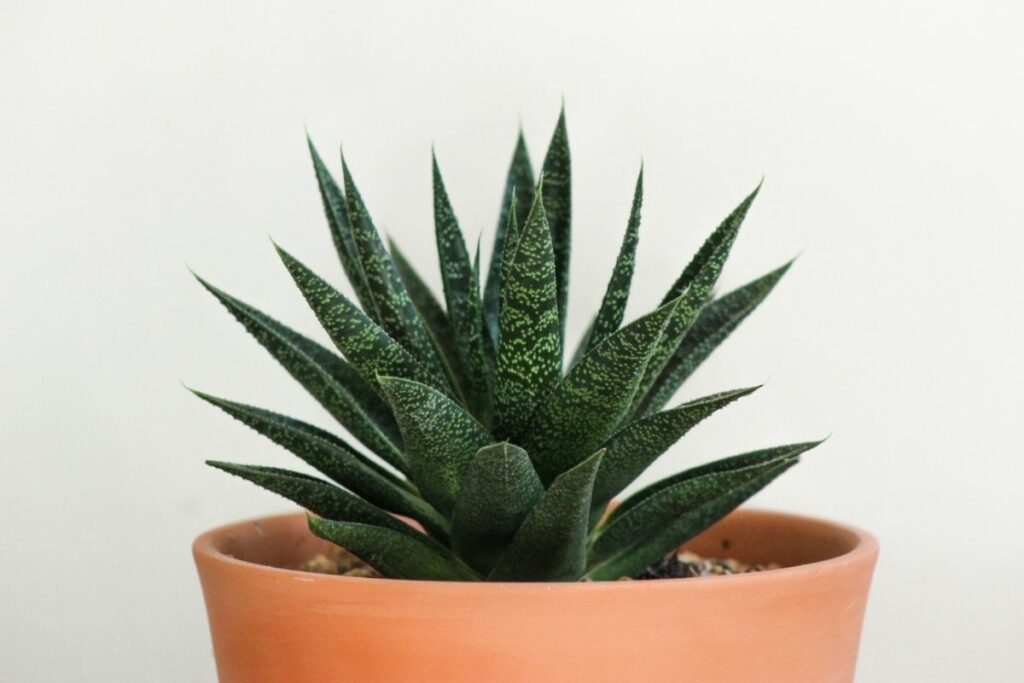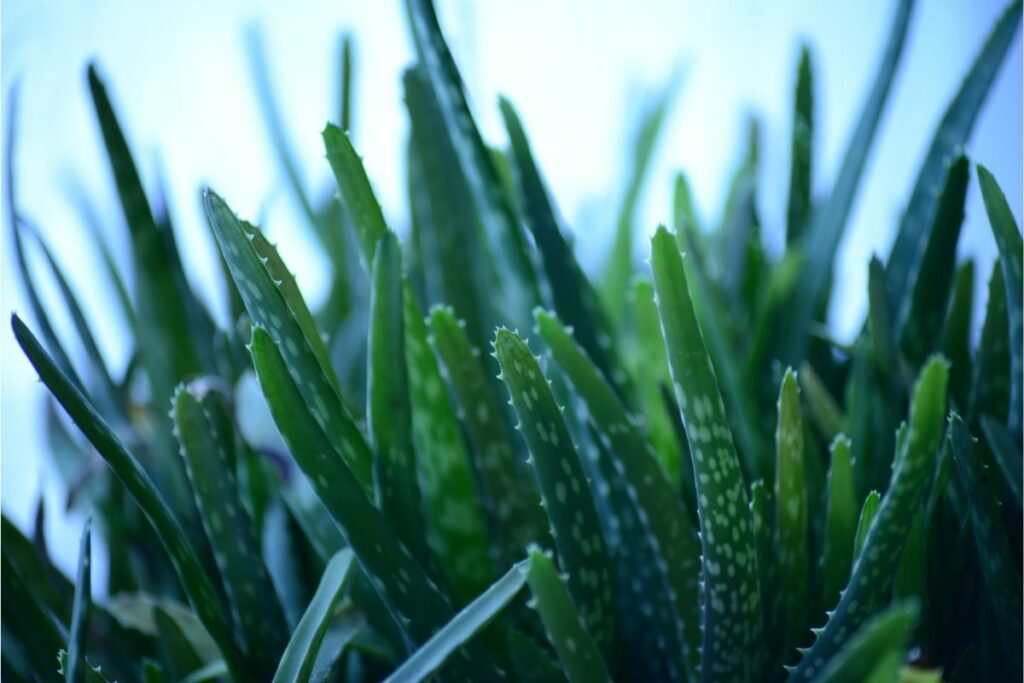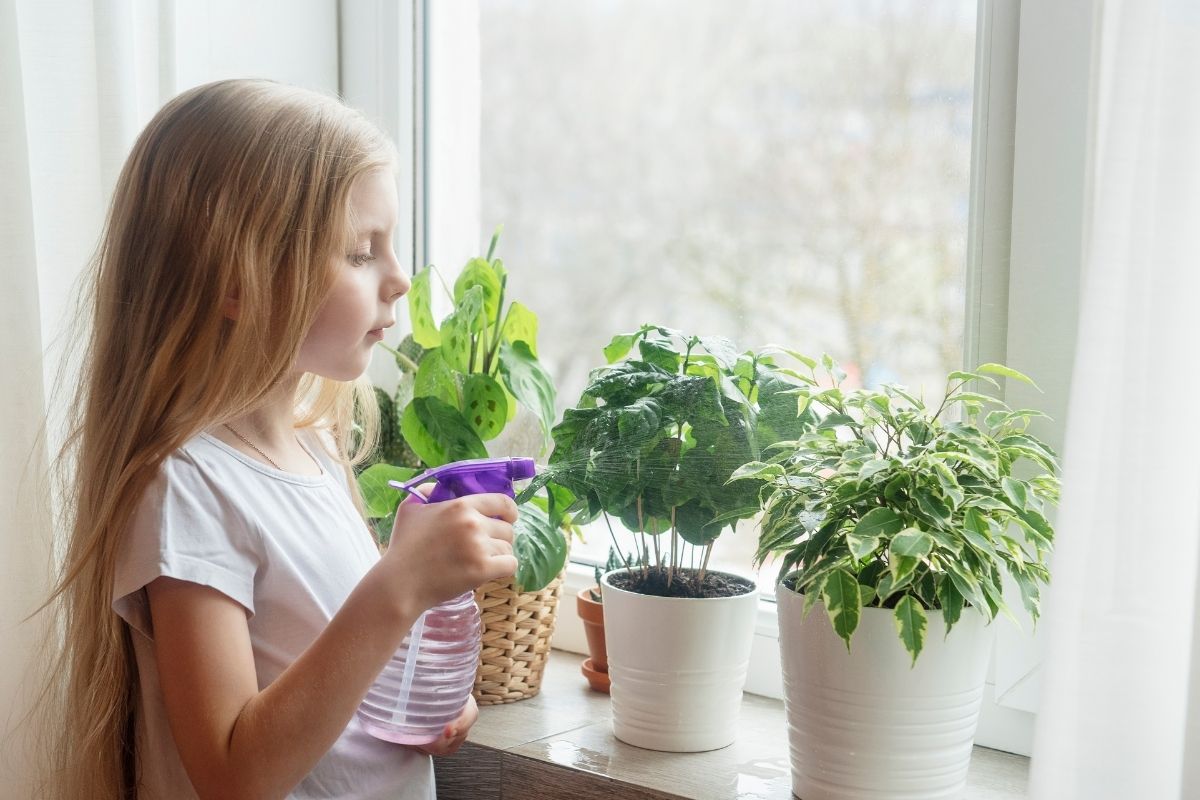Aloe vera is a great plant to have about the plant, no matter who you are. Plants add an extra level of atmosphere to your home, which many people believe has positive effects on both mental and physical health.

However, much like any other plant, Aloe vera needs looking after and taking care of. It can be tricky to know what the best way to care for your Aloe vera is, especially when you need to figure out how often it should be watered.
You can search and search, but never find the definitive answer that you need.
Well, no more! Today we are here with the answers you need. Keep reading to find out how often you should water Aloe vera!
What Is An Aloe Vera Plant?
Aloe vera is a green plant originating from North Africa, Southern Europe, and the Canary Islands – a group of Spanish islands off the west coast of mainland Spain and northwest Africa.
Coming from the Aloe genus, the Aloe vera plant is stemless, with thick, green, fleshy leaves that extend out from the central stem.
The leaves have small teeth-like features along the edges, which it produces when entering the growth phase of their lives. The reason for these spikes is to deter predators from eating the plant and consuming it.
Even if the animal manages to break the leaves, they end up with a few cuts and bruises for their troubles.
There are around 250 different species of Aloe vera, however, only four of these are produced and cultivated for their health benefits. The most commonly cultivated species of the plant, Aloe Vera Barbadensis, is native to regions in North Africa.
The species of plant was first used medicinally in a time around 2200 BC at the same time as Mesopotamia civilization. These records have described ancient societies using the plant as a laxative, despite the plant’s medicinal uses being more varied nowadays.
In modern life, we use Aloe vera for anything from treating sunburn to helping to ease skin conditions. On top of this, you can also use Aloe vera to soften hair and keep it healthy.
Where Do I Place An Aloe Vera Plant?
Much like other plants, Aloe vera benefits massively by being in a position with access to natural sunlight. However, it’s important to make sure that the plant doesn’t have too much direct sunlight or it may dry out and die.
Rotating the pot once or twice a week can make sure that all sides of the plant get the same amount of exposure and keep all sides evenly healthy.
Windowsills and shelves that are near windows are ideal spots for Aloe vera and can help them to have longer lives. However, if placed on a windowsill, remember to make sure that the location isn’t directly facing the sun, or the plant’s leaves will start to brown and wither.
How Often Do You Water Aloe Vera?

We recommend that you water your plant approximately every three weeks. Because of their origins, Aloe vera plants are used to inconsistent amounts of water, much like cacti.
Make sure that you water the plant deeply, but infrequently, ensuring that all of the roots and other features can get enough to thrive from. Make sure that the plant doesn’t sit in the water, otherwise you run the risk of overwatering the plant.
You can usually tell when an Aloe vera plant needs watering by pressing your fingers down into the soil. By descending a few inches into the plant’s floor you can get a good idea if the plant’s soil is too dry or still has some moisture in it.
Of course, if the soil is dry then you will need to water your plant. It’s vital not to overwater your Aloe vera plant or you may end up killing your plant, and nobody wants to do that!
What Does An Overwatered Aloe Vera Plant Look Like?
The leaves of your Aloe vera plant should look firm and stand upright, whilst not feeling too soft to touch, but plump enough that it doesn’t feel overfed. You can tell when your plant is overwatered because the leaves will develop water-soaked spots.
These are features that look soggy and soft, making the leaves oversaturated with liquids and water. The leaves can then fall from the weight of the water in the system and turn to mush.
However, there are ways to save your Aloe vera plant from dying.
How to Save Your Aloe Vera Plant
For those who have accidentally watered their plant too much or not given them enough sunlight, you can save your plant by trimming back the leaves.
By cutting the leaves back, you’re expelling the damaged features of the plant and encouraging the Aloe vera to regrow healthy leaves to take their place.
It’s always good to monitor your plant every couple of days to ensure all of the leaves are getting the right amount of light exposure and moisture.
Is Aloe Vera Toxic?
Although the plant has its health benefits amongst humans, we don’t recommend ingesting the plant without checking with a professional first. Unfortunately, Aloe vera is extremely toxic to cats and can leave them feeling very sick if ingested.
Cats who have eaten the Aloe vera plant may experience severe vomiting, become drowsy or lethargic, and may even have diarrhea! So it’s always best to keep the plant away from the paws of our furry little friends or keep an eye on the plant when cats are in the room.
Dogs can also experience a few of these symptoms along with a change in urine color, tremors, and general sickness.
Of course, it’s easier to keep plants from the eyeful gaze of dogs than it is with cats, considering our felines’ ability to climb around the higher places of our homes.
However, if the plant is low enough then dogs may not think twice about trying to eat the plant. We know how greedy and curious they can get!
Final Thoughts
The Aloe vera plant is incredibly useful in the healthcare world, however, it also makes for a great houseplant. To brighten up your home, it’s always nice to have a green plant of a unique shape to add an extra bit of atmosphere to your house.
Like with other plants, it’s important to make sure that this plant gets a healthy balance of sunlight and water in infrequent doses.
Why not find yourself an Aloe vera plant today? You won’t regret it!
- Best Hanging Plant For Low Light - September 4, 2023
- Best Indoor Plants Florida - August 28, 2023
- Best Plants For Bathroom Smells - August 21, 2023








